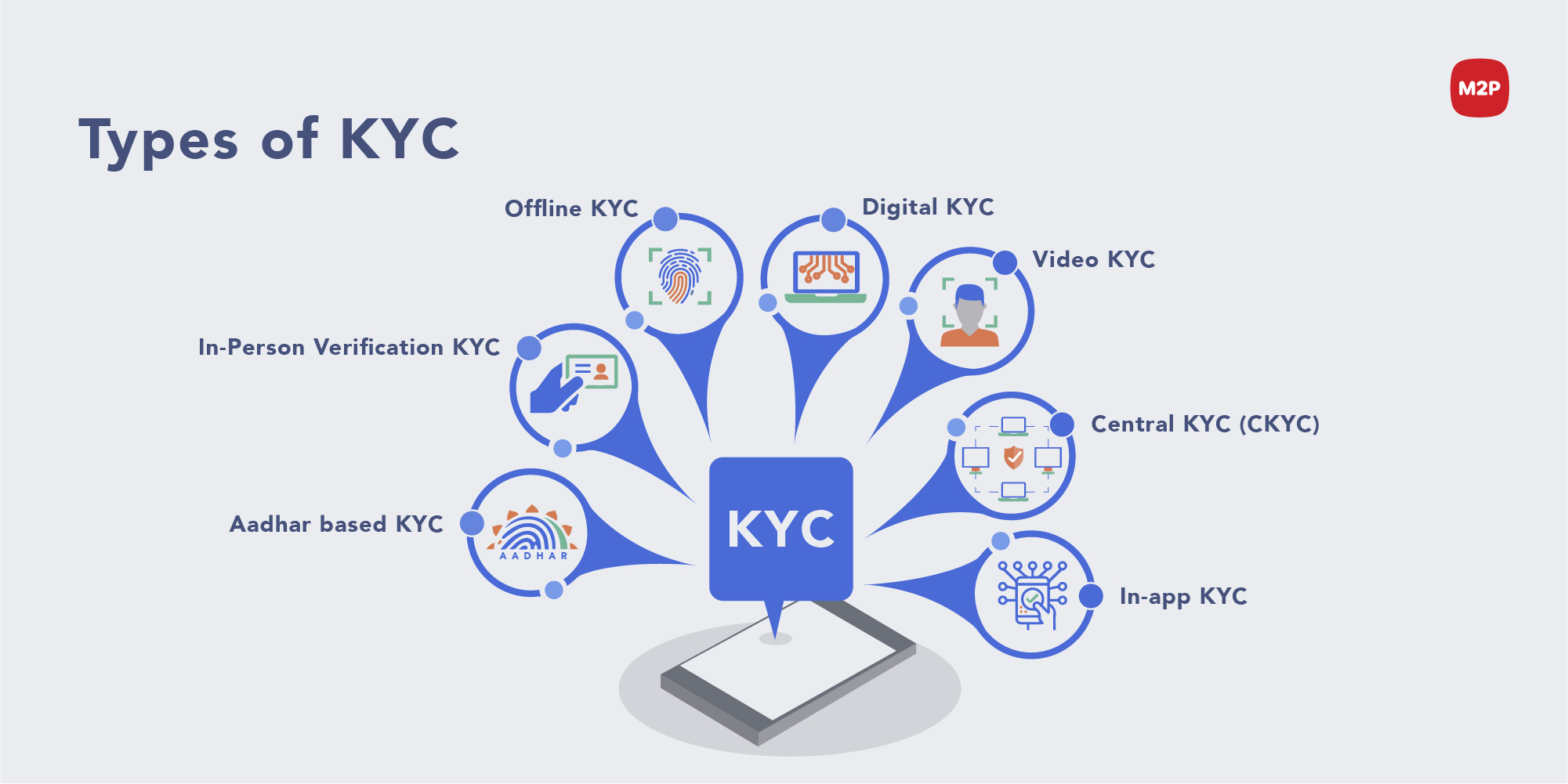
Know Your Customer/ Know Your Client (KYC) is a mandatory process that verifies and authenticates a customer’s identity. All legal and financial institutions must validate their customers to prevent any illegal or fraudulent activities as per Reserve Bank of India’s norms.
Under the guidance of the Prevention of Money Laundering Act, 2002 (PMLA), the RBI mandates that all banks and financial institutions implement KYC procedures.
KYC starts with verifying Proof of Identity (POI) and the Proof of Address (POA) and by which banks, insurance companies, and other organizations obtain information and better understand their customers. It is applicable for both new and existing customers and is the first step in account creation or even to allow a transaction.
Why is KYC mandatory?
As per the Reserve Bank of India’s mandatory regulation, KYC came into legal effect in 2002. The RBI mandates that all financial and legal institutions should assess their customers.
KYC’s objective is to help banks and other financial institutions to assess and validate their customers. An effective KYC alleviates and combats all illicit activities. A financial institution can identify potential threats, criminal, and other illegal activities while verifying the KYC required documents. In a nutshell, a financial institution or a business/corporate uses KYC for,
- Building and Verifying a Customer’s Identity
- Understanding Customer’s Activities
- Evaluating the risks involved with the Customer’s Activities
How does KYC work?
The KYC process is carried out seamlessly with the following simple steps:
- First, the applicant’s PAN/ AADHAR details are collected and validated.
- The applicant further supports the information provided by entering the required details on the website.
- The applicant’s document goes through various checks and authentication processes by the financial entity.
- Once the documents are verified, and once named eligible, then the applicants are onboarded.
Evolution of KYC
Back in 2002, the Reserve Bank of India (RBI) made KYC a legal and mandatory procedure for all financial institutions, preventing misuse of the sensitive information held by banks and restricting money laundering activities.
Evolving from a Paper-based physical attestation method to video adoption, KYC has come a long way. The paper-based KYC demands more physical input because of various document requirements. In contrast, the e-KYC makes the verification procedure less complicated by reducing the physical work of businesses and clients where the data is stored and verified entirely online.
The e-KYC or paperless KYC verification procedure became more preferred by customers once the internet boomed. Now doing e-KYC is made even more accessible as the Government of India has launched Digi Locker under its Digital India initiative. It is a digital document wallet that helps its users to store authentic documents virtually and is highly secured by Aadhaar/OTP authentication.
Types of KYC

1. Aadhaar based KYC
Aadhaar based KYC verification follows the regulations of The Unique Identification Authority of India (UIDAI) and verifies proof of identity and residence through one’s Aadhaar number. In addition, the UIDAI provides information to service providers to activate customer services such as bank accounts, mobile connections, etc.
Every Aadhaar cardholder can quickly and easily complete their KYC process. Aadhaar based KYC is an efficient, paperless process that adheres with government standards.
The Aadhaar based KYC authenticates data in two different ways:
OTP-based — The financial institution verifies the customers’ identity by triggering an OTP to their Aadhaar linked mobile number.
Biometric-based — For Identification and Verification, the financial institution uses the biometrics of the customer by using UIDAI (Unique Identification Authority of India) approved scanners.
2. In-Person Verification (IPV) KYC
The In-person KYC procedure was used by the Security and Exchange Board of India (SEBI) for mutual fund investors. Unlike the other prevalent methods, in-person verification requires the individual to undergo the process offline in an institution, KYC kiosk, or at an AMC. IPV has now upgraded their process via OTP mechanism.
3. Digital KYC
It is a paperless process where a live photo of the client and their Aadhaar is verified and processed online. It also involves submitting the Official Valid Documents (OVD’s) such as Aadhaar, Pan Card, Passport or a Driver’s license.
The digital KYC techniques have many advantages such as,
- The customer’s identity verification happens in real-time,
- The process is flexible because the customer can use any of the OVDs,
- The process is highly secure and efficient due to privacy laws and the usage of AI technology.
4. Video KYC
RBI allowed the usage of Video KYC in 2020 due to the pandemic constraints. Video KYC is a procedure that verifies details of the client in a video-based process. This process involves an auditor and an agent for authentication and audit. Before establishing an account-based relationship, the agent collects the details using video-audio features and AI technology. The process is smoothened by usage of a number placard that helps authenticating the customer.
Video KYC is available as:
- VCIP- Video-based Customer Identification Process
- VIPV- Video-based In-Person Verification
- VBIP- Video-based Identification Process
It employs a trained individual’s audio-video interaction and automated verification methods such as geo-tagging and facial matching.
5. Central KYC (CKYC)
CKYC is a customer or financial institution submitting a Central KYC form and proof of identity and proof of address that relies on the central repository of customer records for CERSAI (Central Registry of Securitization Asset Reconstruction and Security Interest of India). The process detects any duplicate accounts and mitigates other risks.
The C-KYC identifier is a 14-digit unique identifier assigned to a client when they upload their details for KYC. When a client opens an account without C-KYC, it may require them to repeat the whole process. But this 14-digit identifier removes that need, and the customer can use this number to update their information throughout all their accounts uniformly.
6. In-app KYC
This KYC process brings out easy and hassle-free experiences to the customers. All the verification process happens with the help of a smartphone, where the clients can conveniently carry out bank transactions, open bank accounts, and other banking operations.
The clients need to use their smartphones to verify their IDs or passport and begin the KYC process. The KYC also involves real-time scanning of IDs to prevent identity forgeries. It is highly secure due to the deployment of secure technologies.
7. Offline KYC
Offline KYC requires the submission of all the necessary physical documents for verification. It requires filling in all the required details like Aadhaar and PAN. After this, the client must visit a nearby KRA to complete the process and receive an official application number to identify and continue the verification process. Or an agent is sent to the customer’s place to collect documents for KYC verification.
So, what is KRA?
KRAs are KYC Registration Agencies that maintain the SEBI (Security and Exchange Board of India) registered companies records under the KYC regulations Act, 2011. To bring uniformity and avoid duplicate KYC processes, this KRAs help regulate the KYC process that allows a company to authenticate its clients and offer better customer service.
Five different agencies that work as KRAs in India are:
- CVL KRA
- CAMS KRA (Computer Age Management Services Pvt Ltd.)
- NSDL KRA (National Securities Depository Ltd)
- Karvy KRA (Karvy Data Management Services)
- NSE KRA (National Stock Exchange)
To conclude, KYC has evolved over the years from physical forms to real-time AI technology verification methods. KYC satisfies and provides a hassle-free experience to the customers and helps financial service providers establish a smooth relationship.
If you wish to implement a robust KYC system, check out our blog on How to Crack the KYC Implementation.




0 Comments
Trackbacks/Pingbacks